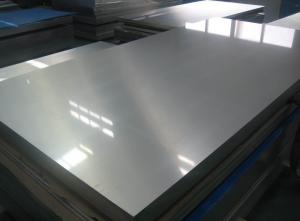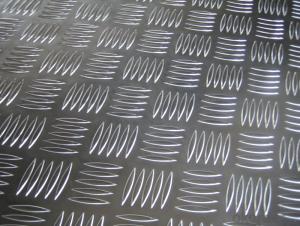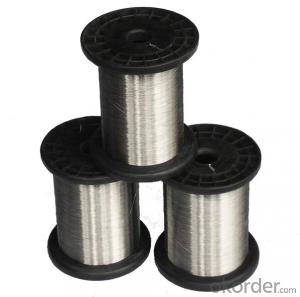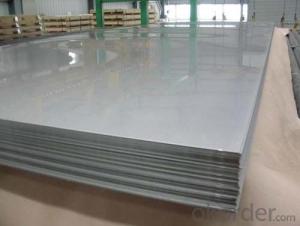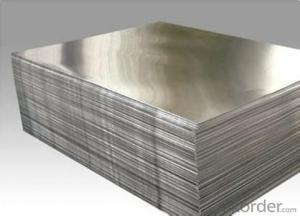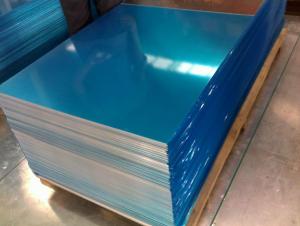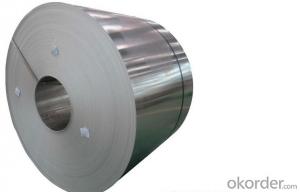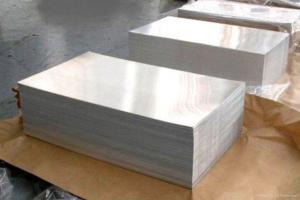3/8 Insulated Aluminum Sheets - Various Kinds of Mill Finished Aluminum Sheet for Different Applications
- Loading Port:
- China main port
- Payment Terms:
- TT or LC
- Min Order Qty:
- 5 kg
- Supply Capability:
- 10000 kg/month
OKorder Service Pledge
OKorder Financial Service
You Might Also Like
1. Description of Various Kinds of Mill Finished Aluminium Sheet for Different Applications
Alloy: 1xxx, 3xxx, 5xxx, 8xxx
Temper: H12, H14, H16, H18, H24, O, H32
Thickness: 0.2-4.0mm
Width: 200-1600mm
2. Application of Various Kinds of Mill Finished Aluminium Sheet for Different Applications
Used in construction and decoration,hardware and electric appliances manufacture,automobile manufacture and other industrial and civil purposes,such as electronic capacitor,composite cooker,rice cooker,refrigerator,computer casting,telecommunication equipment,lamp shade,air-conditioner,cosmetics cover and box,air-conditioner radiator,inner container of disinfecting cabinet,ceiling board,automobile motherboard,cover board and top board,etc.
3. Feature of Various Kinds of Mill Finished Aluminium Sheet for Different Applications
Surface Quality:be free from Oil Stain, Dent, Inclusion, Scratches, Stain, Oxide , Breaks, Corrosion, Roll Marks, Dirt Streaks and other defect which will interfere with use.
Package:Standard Export wooden Case/Pallet
Remark: Specific requirement of alloy, temper or specification can be discussed at your request.
4. Certificate:
SGS and ROHS(if client request, paid by client), MTC(plant provided), Certificate of Origin(FORM A, FORM E, CO), Bureau Veritas and SGS (if client request, paid by client), CIQS certificate
5. Image of Various Kinds of Mill Finished Aluminium Sheet for Different Applications
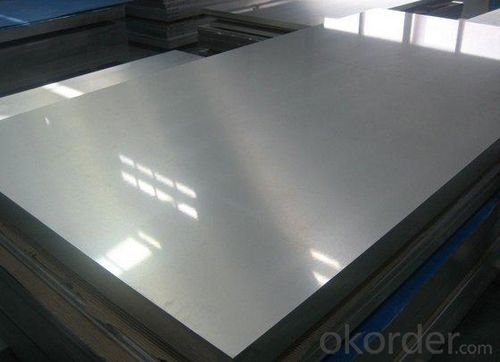
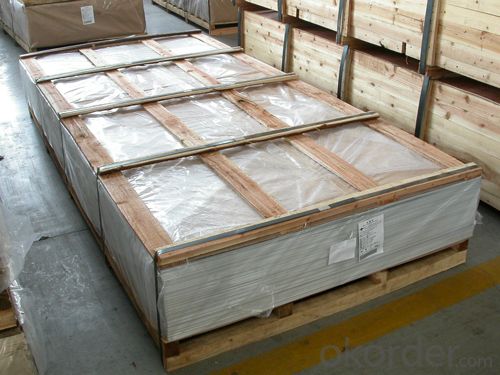
6. FAQ
1) What is the delivery time?
Dpends on actual order, around 20 days
2) What is the QC system:
We have QC staff of 20 persons and advanced equipment, each production is with MTC traced from Aluminum ingot lot.
3) What market do you mainly sell to?
Australia, America, Asia, Middle East, Western Europe, Africa etc
- Q: Can aluminum sheets be used for decorative or architectural purposes?
- Yes, aluminum sheets can be used for decorative or architectural purposes. Due to their lightweight, durability, and versatility, aluminum sheets are commonly used in architectural design and construction for applications such as cladding, roofing, facades, and decorative elements. They offer various finishes, patterns, and colors, making them suitable for enhancing the aesthetic appeal of both interior and exterior spaces. Additionally, aluminum sheets are resistant to corrosion and require minimal maintenance, making them a popular choice for decorative and architectural purposes.
- Q: Calculate the molar mass of the aluminum oxide. A 5.00g strip of aluminum is reacted in air, producing an oxide weighing 9.36g. Calculate the percent oxygen and aluminum in the compound.Calculate the % error for percent of aluminum calculated.
- 1) Yes, indeed. Al?O? is the correct formula for aluminum oxide. Because the ionic formula is Al?? and O??. (Aluminum has an oxidation number of 3+ ; and oxygen has an oxidation number of 2- . So a neutral ionic compound will have the formula Al?O?. Each element will take the number of the opposite ion.
- Q: Can aluminum sheets be bent or formed without cracking or breaking?
- Yes, aluminum sheets can be bent or formed without cracking or breaking, but it depends on the thickness of the sheet and the method used for bending or forming. Aluminum is a highly malleable metal, which means it can be easily bent or formed into various shapes without breaking. However, if the sheet is too thin or the bending or forming process is done without proper care or precision, there is a risk of cracking or breaking. To avoid this, it is important to use appropriate tools and techniques, such as using a bending brake or a rolling machine, and ensuring that the sheet is not subjected to excessive force or stress during the process. Additionally, annealing the aluminum sheet before bending or forming can increase its flexibility and reduce the chance of cracking. Overall, with the right approach and precautions, aluminum sheets can be successfully bent or formed without cracking or breaking.
- Q: Can aluminum sheets be used for outdoor applications?
- Yes, aluminum sheets can be used for outdoor applications. Aluminum is a highly durable and corrosion-resistant material, making it suitable for various outdoor uses such as roofing, siding, and decorative cladding. It is also lightweight, which makes it easier to handle and install. Additionally, aluminum can be coated or painted to enhance its weather resistance and aesthetics, further increasing its suitability for outdoor applications.
- Q: To an idiot, this may seem like a stupid question: its just aluminum. But it may not be.However seeing that I am only a high school student and don't have access to aluminum power (which is what I desire for an independent experiment) so I'd like to grind consumer grade aluminum foil down bases of Mohs scale of Hardness.My concern is that aluminum foil is Aluminum oxide which is a 9 (10 being diamond, 1 being talcum powder) and this would be horribly difficult to grind.If it is Alumina, that's only a 3.5.If it does happen to be aluminum oxide, can you think of a way to remove the Oxygen. Would nitric acid work.
- Foil will not be an element, it is a descriptor meaning a thin paper-like sheet of steel. Aluminum foil is constructed from pure sophisticated Aluminum which is an aspect. Given that Aluminum metallic is particularly reactive, the surface of the foil is without a doubt a skinny coating of Aluminum Oxide formed in reaction with air. This coating acts as a security towards additional corrosion. This corrosion resistance is why aluminum is the preferred steel foil constituent.
- Q: What is the cost of an aluminum sheet?
- The cost of an aluminum sheet can vary depending on factors such as size, thickness, and quality. It is recommended to check with suppliers or conduct market research to get accurate and up-to-date pricing information.
- Q: How do you form curves or shapes in aluminum sheets?
- There are several methods to form curves or shapes in aluminum sheets. One common technique is called bending, where the sheet is clamped and then gradually bent using a mechanical press brake or a hammer. Another method is called roll forming, which involves passing the aluminum sheet through a series of rollers to achieve the desired shape. Additionally, aluminum sheets can be molded or pressed into curves or shapes using specialized tools or dies.
- Q: Can aluminum sheets be used for lithographic printing plates?
- Indeed, lithographic printing plates can make use of aluminum sheets. Lithographic printing, based on the principle that oil and water do not mix, involves the utilization of a metal base, typically aluminum, coated with a photosensitive layer. This layer is subsequently exposed to light, generating a pattern that serves the purpose of printing. Aluminum stands out as a favored material for lithographic printing plates owing to its exceptional characteristics. It possesses a remarkable combination of being lightweight, yet robust and long-lasting. Furthermore, its smooth surface plays a vital role in ensuring the achievement of high-quality prints. Additionally, aluminum's good thermal conductivity facilitates the rapid drying of ink during the printing process. Moreover, aluminum is highly amenable to processing and can undergo chemical treatment to enhance its surface properties, such as rendering it more hydrophilic or hydrophobic. This enables better control over the ink and water balance on the plate, resulting in prints that are sharper and more precise. In conclusion, the use of aluminum sheets for lithographic printing plates is widespread due to their desirable properties and suitability for the lithographic printing process.
- Q: This question asks for the steps or methods required to install aluminum sheets on a rooftop.
- <p>To install aluminum sheets on a roof, follow these steps: 1. Inspect the roof structure for any damage and ensure it can support the weight of the aluminum sheets. 2. Measure and cut the aluminum sheets to the required size using a metal saw. 3. Attach a drip edge to the eaves to prevent water from seeping under the sheets. 4. Lay the first sheet horizontally on the roof, starting from the bottom edge, and secure it with roofing nails. 5. Overlap the subsequent sheets by about 1-2 inches and fasten them with nails, ensuring a watertight seal. 6. Install flashing around vents, chimneys, and other roof projections to prevent leaks. 7. Seal all seams and fasteners with a high-quality sealant to ensure a weathertight installation. 8. Inspect the installation for any gaps or leaks and make necessary adjustments.</p>
- Q: Can 101 aluminum sheets be used in food storage containers?
- Using 101 aluminum sheets in food storage containers is not recommended. These aluminum sheets, often referred to as 101 aluminum, are not suitable for storing food as they are not made from food-grade materials. Typically, they are employed in industrial settings like roofing, construction, and electrical wiring. To guarantee the safety and quality of stored food, it is essential to use containers crafted from food-grade materials such as stainless steel, glass, or food-grade plastic.
Send your message to us
3/8 Insulated Aluminum Sheets - Various Kinds of Mill Finished Aluminum Sheet for Different Applications
- Loading Port:
- China main port
- Payment Terms:
- TT or LC
- Min Order Qty:
- 5 kg
- Supply Capability:
- 10000 kg/month
OKorder Service Pledge
OKorder Financial Service
Similar products
Hot products
Hot Searches
Related keywords
